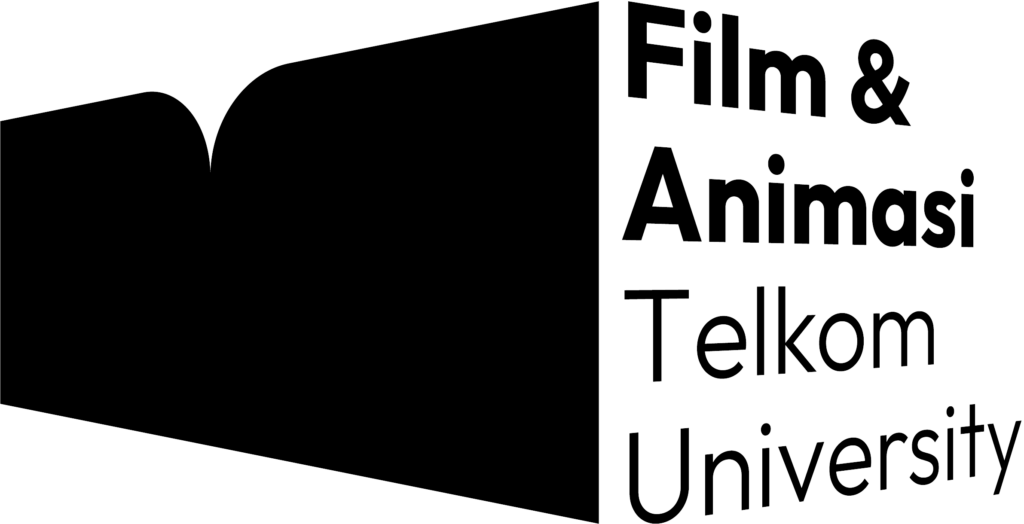
The Future of Careers in Digital Film and Animation
The film and animation industry has experienced rapid growth over the past twenty years. This advancement has been driven by the evolution of digital technology, shifting audience preferences, and the increasing demand for engaging and high-quality visual content. Today, film and animation works are no longer limited to theaters or television, they appear in digital campaigns, educational media, interactive content, and even experiences based on augmented reality (AR) and virtual reality (VR).
These changes have opened up a wide range of film animation career opportunities for the younger generation. They now have greater space to explore, discover new visual styles, and create innovative stories. The ability to stay updated with technological developments and understand audience needs is becoming increasingly vital in today’s creative landscape.
This article will further explore the opportunities within the film animation career path, the essential skills currently demanded by the industry, and the role of education in preparing professionals who are ready to compete in the creative world.
Trends and Developments in the Film & Animation Industry

The film and animation industry continues to show significant growth, both in terms of technology and creative approaches. Innovations such as CGI, motion capture, and 3D animation have transformed the way people enjoy visual media. The blending of the real and digital worlds is becoming increasingly seamless, creating more immersive and engaging cinematic experiences. Today’s audiences are not only looking for compelling stories, but also for visual experiences that make them feel as if they are part of the narrative. This demands that industry players constantly experiment and update their production techniques to deliver visually stunning works.
In addition, the emergence of various digital platforms such as YouTube, Netflix, Disney+, and TikTok has expanded the distribution reach of creative works. Today’s creators can more easily reach a global audience, leading to a growing demand for high-quality visual content. Beyond entertainment, sectors such as advertising, education, and even government are increasingly relying on visual media to communicate messages. These developments open up numerous opportunities within the film animation career path, including roles such as animator, visual effects artist, scriptwriter, director, and digital content producer.
Despite the many opportunities, one of the biggest challenges in a film animation career is the ability to quickly adapt to technological changes and shifting audience preferences. In addition to technical skills, understanding audience psychology, visual storytelling, and communication principles has become increasingly crucial. Successful professionals in this industry are those who can create works that not only please the eye but also touch the emotions. Therefore, interdisciplinary collaboration—between art, technology, and communication—serves as a vital foundation for developing content that is both relevant and impactful.
Essential Skills and Competencies in a Film Animation Career

To compete and grow in the film and animation industry, aspiring professionals need to master a combination of technical, creative, and managerial skills. A film animation career is highly dynamic and demands a diverse set of abilities to produce work that is innovative, targeted, and efficient. Some of the essential skills required include:
- Visual Storytelling: In film and animation, conveying messages and emotions through strong visual narratives is a core skill. Professionals must be able to craft engaging and emotionally resonant stories that are easy for audiences to follow. Visual storytelling includes mastering composition, lighting, and character movement.
- Industry Software Proficiency: Proficiency in industry-standard software such as Adobe After Effects, Blender, Maya, and DaVinci Resolve is crucial. These tools enable professionals to efficiently produce high-quality visuals, from video editing and animation to visual effects.
- Team Collaboration: Many film and animation projects involve cross-functional teams of animators, scriptwriters, designers, and technicians. Strong communication and teamwork skills are therefore essential. Effective collaboration ensures a cohesive final product that meets audience expectations.
- Understanding Trends and Audiences: Staying up to date with global trends and shifting market demands is vital. Balancing originality with trend awareness helps creators remain competitive and relevant. The ability to understand audience preferences is key to producing targeted and impactful content.
- Project and Time Management: Film and animation production requires detailed planning. Creating timelines, managing budgets, and coordinating teams effectively are critical for project success. These managerial skills are essential for building a sustainable film animation career.
By mastering these skills, aspiring professionals will not only adapt quickly to the evolving film and animation industry but also unlock greater opportunities to grow and succeed in a competitive film animation career.
Telkom University’s Strength in Preparing Creative Talents
In today’s fast evolving era, adaptive and industry oriented education is essential for preparing competent creative professionals. Telkom University, through its Faculty of Creative Industries and Film and Animation Program, emphasizes an educational approach that blends theory with practice, while fostering direct engagement with the creative industry.
Some of Telkom University’s key strengths in nurturing creative talent include:
- Comprehensive and Modern Learning Facilities
Telkom University offers a range of facilities to support hands on learning, including production studios, editing suites, and research and development labs. These facilities provide students with real-world environments where they can apply their knowledge and sharpen their skills. - Industry Relevant Curriculum The curriculum in the Film and Animation Program is designed to align with current industry trends. Students are encouraged to develop both technical skills and creative thinking, preparing them not only to meet industry demands but also to innovate within their field, key aspects of building a successful film animation career.
- Strong Industry Collaborations Telkom University partners with numerous companies and professionals in the creative sector. These collaborations provide students with internship opportunities and direct involvement in real-world projects, giving them valuable exposure and a chance to build professional networks early in their careers.
- Experienced Lecturers and Industry Practitioners Many of the lecturers at Telkom University are active practitioners in the creative industry. Their expertise bridges academic knowledge with real industry insights, helping students stay informed about current trends, tools, and challenges they may face in the film animation career landscape.
- An Innovative and Collaborative Campus Environment The university fosters an ecosystem that encourages interdisciplinary collaboration, boundless creativity, and the development of new ideas. Students are empowered to experiment and collaborate with peers and industry partners to create impactful creative works.
Career Prospects and Professional Development Paths

Graduates of the film and animation study program have a wide range of film animation career. In addition to working in production houses, television stations, or large animation studios, graduates can also explore careers in other creative fields. As the film and animation industry continues to grow, new opportunities are emerging. Some of the careers they can pursue include:
- Animator and Illustrator: Working in various industries, such as film, advertising, and video games. Animators are responsible for creating character movements and visual elements, while illustrators create visual works for digital products, books, and other media. In film animation career, these skills are essential for producing stunning visuals.
- Motion Graphic Designer: With the increasing demand for dynamic visual content, motion graphic designers create graphic animations for advertisements, promotional videos, and social media. This role combines graphic design and animation, playing a significant role in modern film animation career.
- Visual Effect Artist: Creating stunning visual effects for films, advertisements, and video games. With technological advancements, this profession has become increasingly important in creating realistic and breathtaking visuals, contributing significantly to film animation career.
- Scriptwriter and Storyboard Artist: Scriptwriters develop strong stories, while storyboard artists illustrate the visual narrative as a guide for production. Both roles are crucial in designing the plot and structure of films or animations, and they also have a significant impact on film animation career.
- Content Creator and Independent Director: With the rise of digital platforms like YouTube, TikTok, and Instagram, many graduates choose to become content creators or independent directors. They create and upload visual content that directly connects with audiences, without relying on large production houses.
- Creative Director at Advertising Agencies: As the main creators in advertising, creative directors design compelling ad concepts and visuals for clients. Graduates in film and animation who have storytelling and design skills can play a key role in this industry.
- Content Designer for Educational Media: Film and animation graduates can also pursue careers in creating visual content and animations for digital educational materials. They develop video based learning or interactive applications that are engaging for audiences.
In addition to traditional professions, as technology evolves, hybrid careers combining various skills are becoming more common. For example, professionals in film and animation can now get involved in augmented reality (AR) projects, interactive games, and user interface design based on visual storytelling. This opens up significant opportunities to collaborate with the technology, education, healthcare, and many other sectors.
With the variety of careers available, film and animation graduates can tailor their career paths according to their interests, skills, and the ever-changing industry. This creates great opportunities for them to grow and succeed in the dynamic creative world.
FAQ (Frequently Asked Questions)
For those interested in joining the Film and Animation Study Program at Telkom University, here are some frequently asked questions to help you get a clearer picture of the program.
- Do I need to have an art background to enter the Film and Animation program?
Not necessarily. What matters most is having a strong interest in visual storytelling and a willingness to learn. - Does Telkom University offer scholarships for this program?
Yes, various scholarships are available, including academic, non-academic achievement, and industry partner scholarships. - How can I view previous student portfolios?
Students’ works can be seen on the program’s official social media accounts and during regular digital exhibitions. - Are graduates limited to working in the film industry?
Not at all. Graduates are also in demand in advertising, digital media, education, interactive technology, and many other sectors. - Can I pursue further studies after graduating from this program?
Absolutely. Graduates can continue to master’s level studies in film, animation, or other creative media fields.
With all the developments and opportunities available, the world of film and animation is one of the most promising career paths in today’s digital era. As technology evolves and demand for high quality visual content increases, this industry offers vast room for innovation and growth. Telkom University is committed to not only equipping students with technical skills but also shaping critical and creative thinking to face the ever changing challenges of the industry. With complete facilities, teaching by industry professionals, and a relevant curriculum, the Film and Animation Program at Telkom University is ready to prepare you for success in the creative industry.



